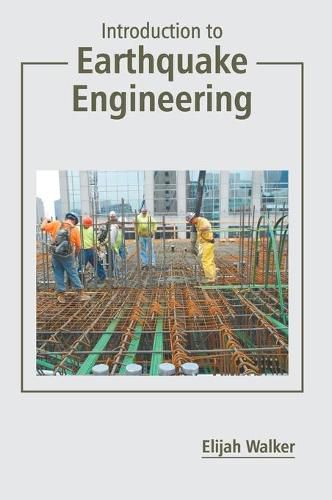Readings Newsletter
Become a Readings Member to make your shopping experience even easier.
Sign in or sign up for free!
You’re not far away from qualifying for FREE standard shipping within Australia
You’ve qualified for FREE standard shipping within Australia
The cart is loading…






The branch of engineering that is concerned with the designing and analysis of structures to avoid damages caused by earthquakes is known as earthquake engineering. The goal of the discipline is to make structures like buildings and bridges that are resistant to earthquakes. It aims to make structures that do not stumble in case of minor shaking or collapse during a major earthquake. It focuses on the protection of natural and man-made environment and societies from earthquakes by stopping risks to acceptable levels. Earthquake engineering has two primary objectives; to foresee the consequences of earthquakes and design and maintain structures that can sustain earthquakes. The field is considered a subset of mechanical engineering, chemical engineering, applied physics, geotechnical engineering and structural engineering. This book unfolds the innovative aspects related to this field which will be crucial for the holistic understanding of the subject matter. It also elucidates new techniques and their applications in a multidisciplinary approach. This book is meant for students who are looking for an elaborate reference text on earthquake engineering.
$9.00 standard shipping within Australia
FREE standard shipping within Australia for orders over $100.00
Express & International shipping calculated at checkout
The branch of engineering that is concerned with the designing and analysis of structures to avoid damages caused by earthquakes is known as earthquake engineering. The goal of the discipline is to make structures like buildings and bridges that are resistant to earthquakes. It aims to make structures that do not stumble in case of minor shaking or collapse during a major earthquake. It focuses on the protection of natural and man-made environment and societies from earthquakes by stopping risks to acceptable levels. Earthquake engineering has two primary objectives; to foresee the consequences of earthquakes and design and maintain structures that can sustain earthquakes. The field is considered a subset of mechanical engineering, chemical engineering, applied physics, geotechnical engineering and structural engineering. This book unfolds the innovative aspects related to this field which will be crucial for the holistic understanding of the subject matter. It also elucidates new techniques and their applications in a multidisciplinary approach. This book is meant for students who are looking for an elaborate reference text on earthquake engineering.